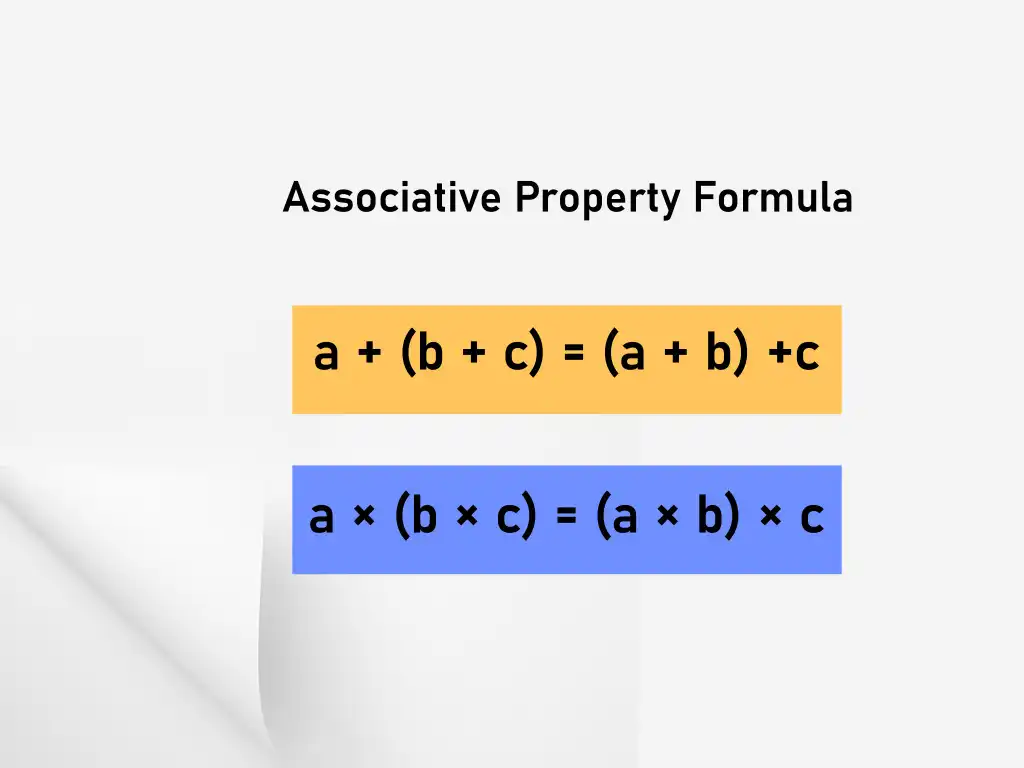The associative property, an enigmatic yet fundamental concept in mathematics, dictates the ethereal dance of grouping numbers during addition and multiplication. It postulates that the order in which we group elements within an expression holds no sway over the final outcome, as long as the sacred sequence of the numbers themselves remains inviolate. This seemingly innocuous principle forms the bedrock of a plethora of mathematical operations, streamlining calculations and fostering a deeper comprehension of numerical relationships.
Demystifying the Associative Property Through Practical Applications
Let’s embark on a voyage of discovery through the realm of examples to illuminate the essence of the associative property.
Addition: A Paradigm of Grouping
Consider the expression 5 + 3 + 2. The associative property empowers us to rearrange the grouping in two distinct ways:
- (5 + 3) + 2 = 8 + 2 = 10
- 5 + (3 + 2) = 5 + 5 = 10
In both scenarios, irrespective of how we group the numbers (5, 3, and 2), the sum remains steadfast at 10. This exemplifies the associative property of addition, expressed as:
(a + b) + c = a + (b + c)
Multiplication: Another Realm of Grouping
The associative property, like a benevolent deity, extends its dominion to the realm of multiplication as well. Take the expression 4 x 2 x 3. We can regroup the numbers without altering the final product:
- (4 x 2) x 3 = 8 x 3 = 24
- 4 x (2 x 3) = 4 x 6 = 24
Once again, the order of grouping exerts no influence on the outcome (24). This beautifully demonstrates the associative property of multiplication, encapsulated in the following formula:
(a x b) x c = a x (b x c)
These examples illuminate the power of the associative property. It allows us to conquer expressions by focusing on individual calculations within parentheses before uniting them. This elegant strategy streamlines the process and minimizes the potential for errors.
The Associative Property: A Ubiquitous Force in Mathematics
The associative property transcends the boundaries of simple addition and multiplication, weaving its magic throughout the tapestry of mathematical operations and concepts. Here, we delve into some of its noteworthy applications:
-
Evaluating Expressions with Finesse: When grappling with complex expressions brimming with multiple operations, the associative property empowers us to strategically group terms, facilitating a smoother evaluation process. We can prioritize calculations within parentheses without jeopardizing the overall outcome.
-
The Distributive Property: A Close Kin: The distributive property, another cornerstone of mathematics, is inextricably linked to the associative property. It establishes a connection between the multiplication of a sum or difference and the individual terms nestled within the parentheses. This intricate relationship underscores the interconnectedness of these fundamental properties.
-
Abstract Algebra: A Realm of Grouped Elements: The associative property plays a pivotal role in abstract algebra, particularly in the study of groups and rings. These abstract structures hinge on the ability to combine elements while preserving specific relationships, a feat guaranteed by the associative property.
Beyond Arithmetic: The Associative Property’s Broader Influence
The associative property’s influence extends far beyond the realm of arithmetic, finding applications in diverse disciplines:
-
Logic: The Orderly World of Propositions: In propositional logic, the associative property governs the order of operations within logical expressions. It ensures that the truth value of a compound statement remains unchanged regardless of how we group parentheses.
-
Computer Science: The Efficiency of Order: In the intricate world of computer programming, the associative property dictates the order of evaluation for certain operators within an expression. This knowledge is paramount for crafting efficient and predictable code.
The Associative Property: A Cornerstone for Learning Math
Mastering the associative property equips students with a powerful arsenal of tools:
-
Problem-Solving Prowess: By comprehending how grouping affects calculations, students develop the ability to approach problems with greater flexibility. They can strategically choose the most efficient method to solve an expression based on the numbers involved.
-
Conquering Complexity: The associative property empowers students to break down complex expressions into manageable chunks by strategically employing parentheses. This invaluable skill simplifies calculations and reduces the likelihood of errors.
-
Building a Foundation for Mathematical Exploration: The associative property underpins a vast array of advanced mathematical concepts. A solid grasp of this principle lays the groundwork for further exploration in algebra, calculus, and the fascinating world of abstract algebra.

